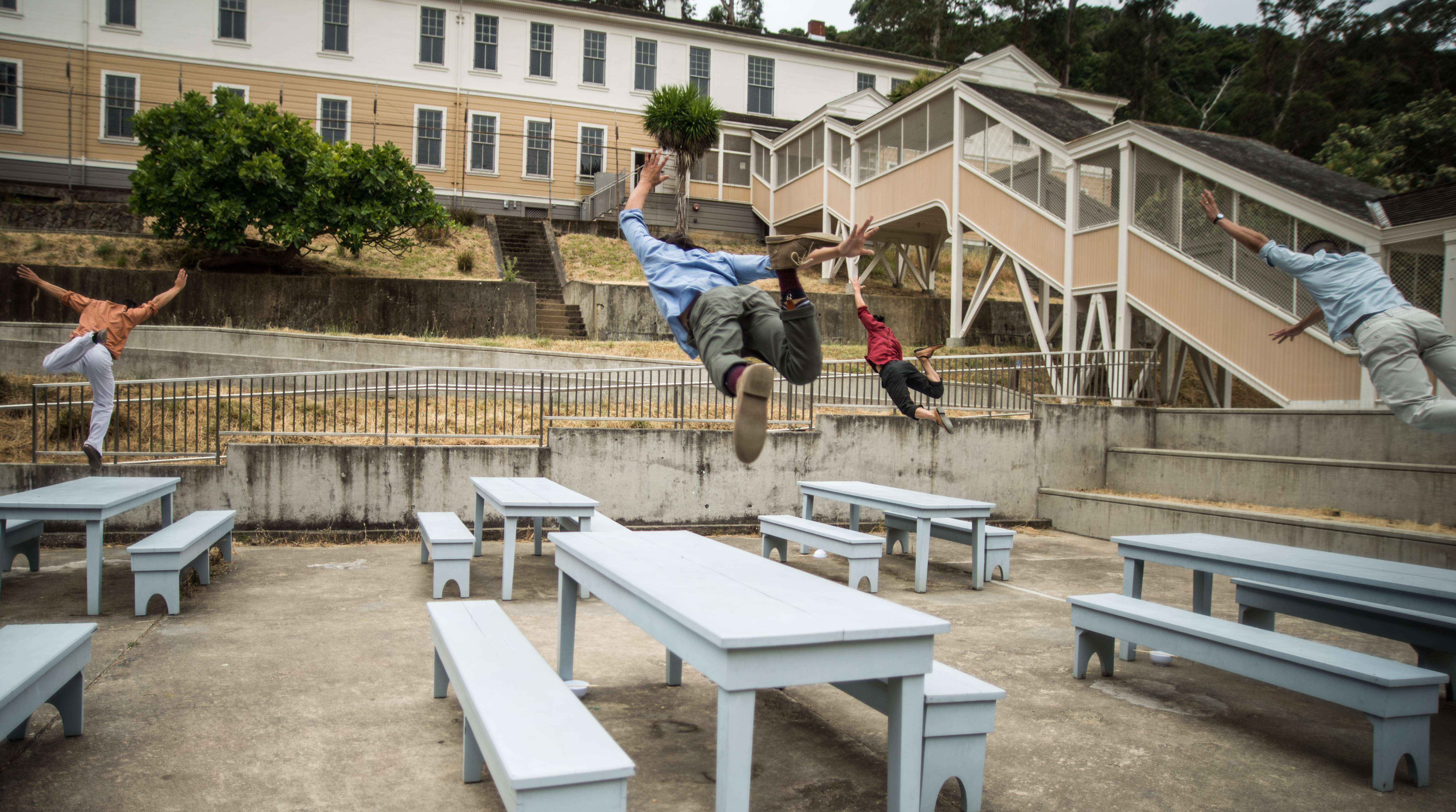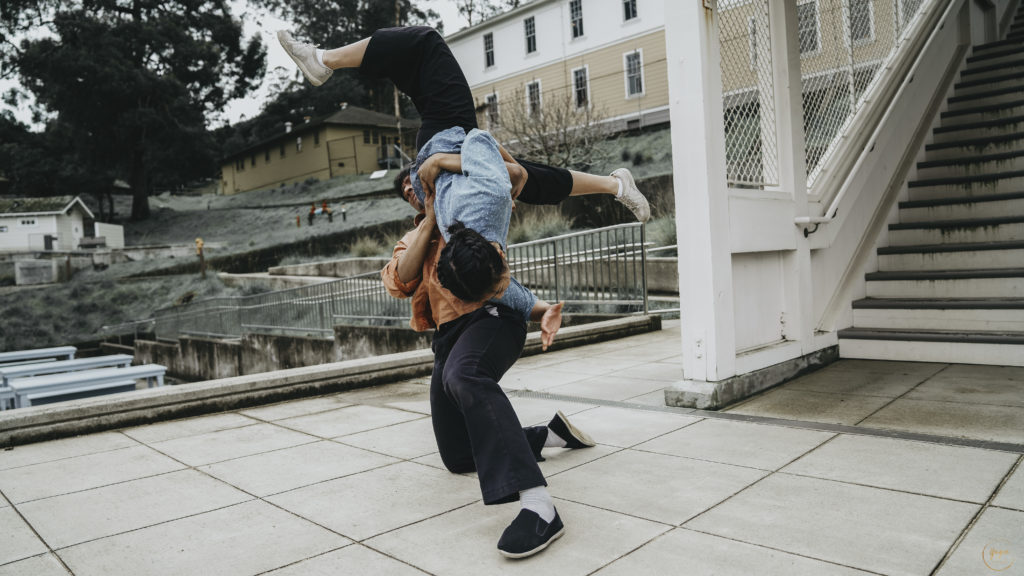
photo by Robbie Sweeny
The Gold Rush: 1848-1855. Much attention has been paid to this historical era. And for good reason. It was a time when folks from near and far flocked to California and other West Coast locales in desire, hope and thirst – the desire for a better life, the hope of financial prosperity and the thirst for adventure. Some found great fortune, while for others, luck proved elusive.
But that energetic pursuit didn’t wither or disappear in 1855. For decades after, significant migration continued. Places like San Francisco shone with allure and appeal. 6500 miles away in China, the region had been dubbed ‘Gold Mountain’ – a site of limitless possibility. And so, countless Chinese citizens made the heart wrenching decision to leave their families and bravely depart for this beacon of promise. For those who made the journey between 1910 and 1940, Angel Island’s Immigration Station would likely have been their port of entry into the US. But as they stepped into the station, they would not be met with welcome, but instead with rejection, suspicion, restrictive laws and attitudes, all fueled by anti-immigrant rhetoric and racist legislation, like The Chinese Exclusion Act of 1882, a statute that would remain in effect until 1943 with strict limits to immigration from China continuing until 1965.
The parallels between these events of decades past and the current immigration system are haunting. So many of today’s policies blatantly and brashly target certain races, ethnicities and religions. How can we be better? How can we do better? How can the present day be informed by delving into the past? Lenora Lee Dance (LLD) is fired up and ready to be part of this urgent conversation. This spring, they are inviting audiences to join them by looking back at Chinese immigration in the early 1900s. From May 4 through 19, the company will be mounting two works in Angel Island’s Immigration Station – 2017’s Within These Walls and the world premiere of its sequel, Dreams of Flight – both of which mine the ordeals and harsh realities faced by Chinese immigrants. Audience members will embark on their own journey to the station (by ferry) and when they arrive, will be met with a heady mix of dance, music, text, poetry, and video. Character-driven scenes and staged interrogations will unfold concurrently throughout the station, which viewers will engage with at their own pace and in their own time. And with each potent episode comes opportunity—the chance to immerse oneself in another’s story and to witness survival and resilience rising above fear and hate. “The performances become live, heightened sensory experiences that provide agency for the roaming audiences – they are constantly being faced with deciding where to go, which performers to follow, whose narrative they would like to see unfold, and how to respond to what is going on in front of them,” says Artistic Director Lenora Lee, “I think immersive work can shift the viewer’s perspective of the world, others and themselves.”
The intersection of performance and social justice is and has always been part of LLD’s DNA. Since Lee formed the company in 2007, they have been committed to creating art that not only confronts injustice but, “pushes for change, for the rights of all across the world, and for the ability to see and enable, in ourselves and others, unconditional love and compassion.” 2015’s Fire of Freedom examined the consequences of war, and how communities and individuals are decimated by its trauma and horror. 2012’s The Escape, 2013’s Rescued Memories: New York Stories and 2016’s The Eye of Compassion tackled the dark connection between immigration and the exploitation of vulnerable women. Though she had spent years digging into this subject matter for these three works, Lee knew that her inquiry into immigration, specifically Chinese immigration, was far from over – there was more to uncover, more to discover, and more truths to share. To that end, LLD has taken a deep dive into the history of Chinese immigration in the past few years. Much emerged from this process, including the premiere of Within These Walls on Angel Island in October of 2017.
“We were humbled and blown away by the response when we opened in 2017,” Lee remembers, “while the piece definitely focused on a particular time and a particular population, the themes – obstacles that immigrants might face as well as injustices in our political system – speak on such a large scale; even people who had no direct connection to the narrative or place were so affected.” Because of that magnitude, Lee knew immediately that she wanted to bring the piece back, and at the same time, she also yearned for the chance to revisit and expand the characters, one of which is based on her maternal grandmother’s first-hand account of the station. Remounting Walls and adding a new sequel chapter (Dreams of Flight) felt an ideal way to accomplish both. “We really wanted the opportunity to perform at the station again and feel the weight of the location,” she relays, “and I was interested in continuing the progression of four of the main characters—the first piece ends in a kind of cliffhanger, and a sequel allows us to consider what happens next in their stories.”

Clearly, Walls and Dreams are linked by narrative throughlines, but they also share compositional threads. First and foremost, they are site-specific, immersive works. Choreographically, Lee developed the vocabulary for each in collaboration with the performers, which has resulted in a rich and diverse physical language. The dancers’ varied training, some in contemporary movement, Chinese classical dance and martial arts, some with ballet, break dancing and hip-hop, add to the palate of the piece. And of course, both works share LLD’s signature layered, multi-discipline format. Over the company’s twelve years, Lee has forged many longtime collaborative relationships, four of which are continuing with this project. Francis Wong will be contributing an original score to the powerful vignettes; Olivia Ting, media and graphic design; Tatsu Aoki, film and additional music; and Genny Lim, text and poetry. The poetry component of Walls and Dreams is especially poignant, as multiple surfaces of Angel Island’s Immigration Station are covered with prose that Chinese immigrant detainees carved into the structure more than eighty years ago.
But there are differences between the chapters as well, including the emergence of a collective experience. Dreams is a sequel to Walls, and with the passage of time, a community has formed. And so, alongside their individual journeys, audiences will also see a group expression of the station, communicated through hard-hitting ensemble choreography. Scope is another point of distinction. Walls depicts actual events that the detainees were subjected to – hostile interrogations and interviews, for example – and though there are elements of that in Dreams, it has an additional tonal layer referenced in its apt title. “Along with the nightmarish traumatic realities, we wanted to imagine the hopes and visions for the future that folks had when they landed at Angel Island,” Lee describes, “an exploration of dream states is an important aspect in the work.”
Even though LLD is well acquainted with the Angel Island site (after Walls’ first run), such an undertaking certainly comes with its share of challenges. Not only must the company and the audience be mindful of the historic space’s delicacy, but there are other hurdles to contend with. “Because the station is a museum, parts of it are understandably off-limits,” explains Lee, “and the lead paint on the walls and lead particles on the ground means that some movement options, like floorwork, are out of question.” Extra transportation logistics were obviously part of the picture too, though Lee is so grateful to the California State Parks staff for their incredible support, “they have been so wonderful; it’s a twenty-five minute walk from the ferry to the station and they have generously provided rides for rehearsals and will also be doing so for the performances.” And finally, there have been some general infrastructure issues. When Lee first envisioned Dreams, she saw it playing out in the station’s hospital, which is currently under renovation. So the company had to pivot their plans and set the piece in other parts of the building. But for Lee, the possibility for wide-ranging impact makes any challenge worth it, “I feel strongly that when we, as a society, are able to have empathy and compassion, the change can be major—observing these stories can dispel the ‘us and them’ language and birth a more compassionate perspective on why people choose to leave their home countries.”
Learn more at lenoraleedance.com
This article appeared in the May 2019 issue of In Dance.


